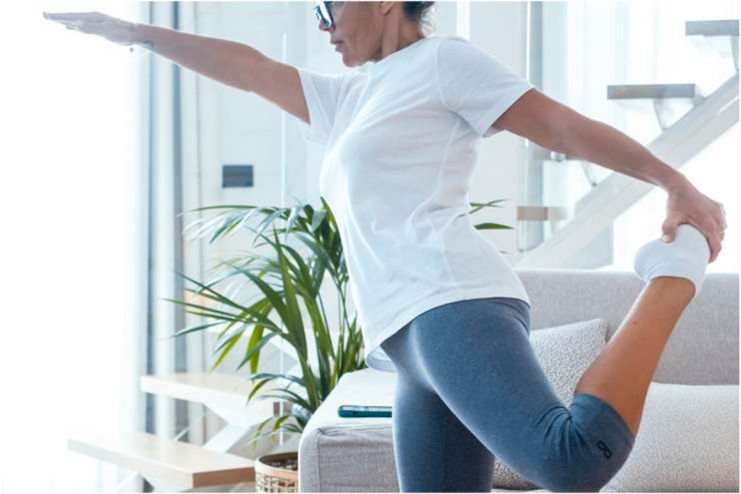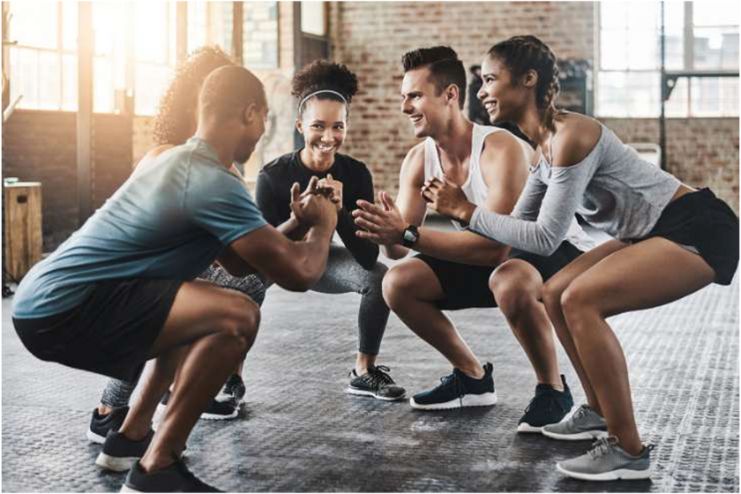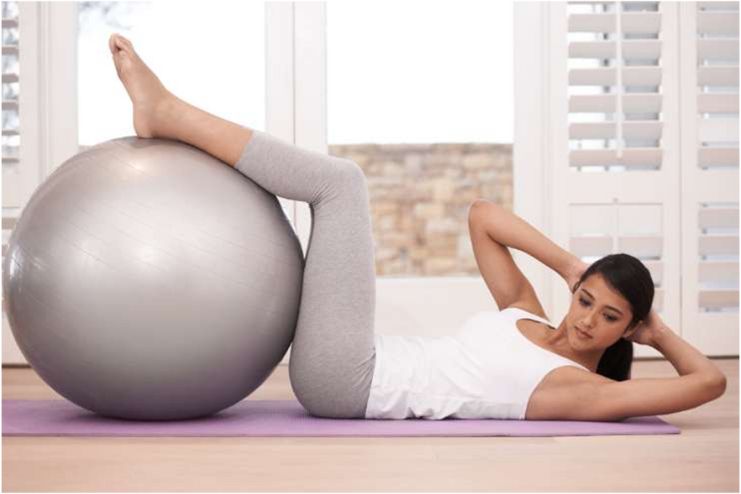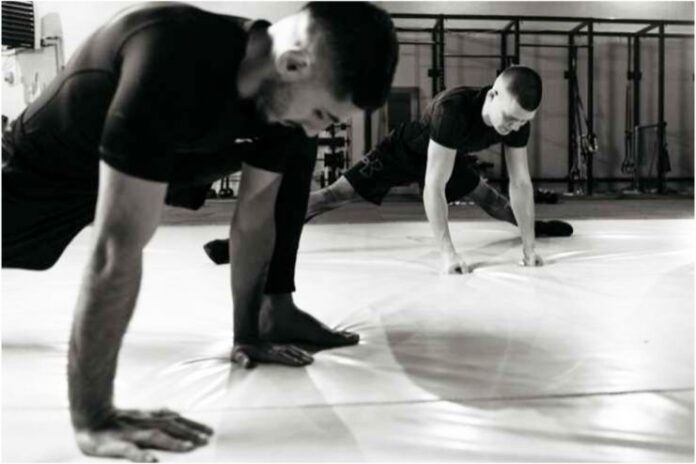Affiliate Disclaimer
Some links in this article are affiliate links. We may earn a small commission if you make a purchase through these links, at no extra cost to you. We only recommend products we find useful to our readersFunctional exercises are becoming essential for building strength and flexibility that helps with everyday activities and aims for overall well-being. Unlike traditional workouts that focus on individual muscle groups, functional exercises concentrate on movements that mimic real-life tasks, offering a more well-rounded approach to fitness.
This shift recognizes that our bodies are designed for smooth, multi-joint movements, not just isolated, stiff exercises.
Anyone who wants to increase their capacity to perform everyday tasks—not just athletes or fitness enthusiasts—should pursue functional fitness. This article highlights the importance of functional exercises in improving everyday activities.
What is Functional Fitness?

Functional fitness aims to enhance a person’s ability to perform daily tasks such as reaching, bending, lifting, and twisting. Unlike standard gym routines that isolate specific muscle groups, functional exercises involve complex motions that target multiple muscle groups simultaneously.
Also known as functional training, these exercises mimic activities you might engage in when playing with a toddler or doing household chores, helping your muscles work together efficiently.
These low-impact workouts can be done at home with minimal or no equipment, making them accessible for all fitness levels. By improving agility, balance, and coordination, functional fitness helps you navigate life’s challenges safely.
Overall, functional exercises are vital for enhancing balance, coordination, flexibility, and strength, creating a more adaptable body capable of handling the demands of everyday life.
Benefits of Functional Exercises
Here are some benefits of performing exercises that mimic your daily activities:
- Improves Posture: Functional exercises strengthen core muscles, helping you stand and sit straight with better spine support.
- Enhances Balance and Coordination: These workouts involve multiple muscle groups working together, which improves your balance and overall coordination.
- Increases Flexibility and Range of Motion: Functional exercises mimic natural movements like bending, lifting, and reaching, making these actions easier and smoother.
- Helps Perform Daily Tasks More Easily: Functional fitness improves mobility and strength, making everyday activities, like carrying groceries or picking up objects, easier and more efficient.
- Reduces the Risk of Injury: Functional exercises stabilize joints, build muscle strength, and improve the body’s natural movements, lowering the chances of sprains and strains.
- Promotes Better Body Alignment: Functional workouts encourage proper body alignment, helping you move safely and naturally during daily activities.
- Builds Physical Strength and Toughness: Strengthening muscles and joints improves overall physical resilience, allowing you to handle everyday movements with less effort.
Functional Exercises for Everyday Activities

1. Lower Body Strength
Functional workouts specifically designed for lower body strength improve stability and endurance for various daily activities. This program strongly emphasizes exercises like squats, lunges, and step-ups because it offers a comprehensive method of strengthening the muscles and joints essential for the best possible lower body functionality.
- Consider squats the perfect replica of the motions we regularly perform throughout the day—sitting and standing. Squats increase mobility and build the lower body by using your hamstrings, quadriceps, and glutes. Start with bodyweight squats and concentrate on smooth, controlled movements. For an additional challenge, gradually increase the weights or resistance.
- Lunges improve balance, stability, and endurance by simulating walking or stepping forward. Your calves, thighs, and hips work together to build strength and coordination with every lunge. Frequent lunges significantly reduce the difficulty of navigating uneven surfaces, such as walking on sidewalks or climbing hills.
- Step-Ups: Stepping onto a curb or climbing stairs challenges both your leg strength and balance. A step-up is the functional equivalent of mastering these everyday movements. By stepping onto a stable surface, like a bench or box, you can effectively strengthen your lower body muscles and prepare them for daily tasks and activities.
These functional workouts result in a more muscular lower body that provides a solid base for everyday chores. Enhanced stability is essential for exercises like walking, where a powerful lower body guarantees a sure step and lowers the chance of tripping.
2. Upper Body Strength and Mobility
Developing upper body strength is crucial; most of us desire more strength. It is necessary for practical tasks like mowing the grass, picking up large objects, lugging hefty boxes, and reaching for objects out of our reach. Women, in particular, need to build their upper bodies because they usually lack strength in this area. As we age, we lose muscle, so why not use this upper-body strength training to regain it?
Focusing on upper body strength and mobility in the context of functional fitness can only achieve a well-rounded and capable physique. Push-ups, rows, and shoulder presses are essential exercises for strengthening the muscles and joints required for lifting, reaching, and carrying.
- Push-ups are a classic bodyweight exercise that strengthens the triceps, shoulders, and chest while improving core stability. They simulate the pushing motion used for tasks like lifting items to chest height or pushing open doors.
- Rows target the latissimus dorsi and rhomboids, the key muscles in the upper back. You can perform rows using dumbbells, resistance bands, or a cable machine. Strengthening these muscles helps with lifting and pulling tasks and improves posture.
- Shoulder presses involve lifting weights upward to target the deltoid muscles in the shoulders. This exercise builds shoulder strength and enhances the range of motion. It helps with tasks like reaching high shelves or lifting items above your head.
These upper body functional exercises work together in a way that goes beyond just building muscle; they refine the particular skills needed for the complex movements that are part of daily life.
3. Core Stability and Balance

Strong core muscles facilitate a wide range of activities. When your core muscles are strong, it’s simpler to swing a golf club, grab a glass from the top shelf, and bend over to tie your shoes. Athletes like runners benefit from having strong core muscles.
A strong core is the foundation of functional fitness, essential for preserving balance, stability, and overall body control. Beyond the abdomen, the lower back, hips, and pelvis are also considered core muscles. These muscles work as a powerhouse for a wide range of activities. Including specific exercises that target the development of the core, such as planks, bridges, and rotations, is essential to developing a solid and sturdy core.
- Planks target the rectus abdominis, transverse abdominis, obliques, and other core muscles. This static exercise builds both strength and endurance.
- Bridges focus on strengthening the glutes and lower back muscles, working the posterior chain. Stronger muscles in this area help with pelvic alignment and spinal stability. They are also essential for bending over or picking things up from the ground.
- Exercises like woodchoppers and Russian twists work the obliques and transverse abdominis. These movements improve your control when twisting or turning your body.
A strong core directly impacts the quality of motions and stability in day-to-day activities beyond aesthetic considerations. An exercised core offers a strong base for bending (shoelace tying, for example) and twisting activities.
4. Functional Flexibility
Beyond the conventional ideas of stretching, flexibility is emphasized in the context of functional fitness as a fundamental component for improving daily tasks and facilitating movement. Exercises for flexibility, such as stretches for different muscle groups, are essential for keeping the body flexible, adaptive, and able to do various tasks.
- Stretching: Stretching helps keep the body flexible and able to perform a variety of tasks. Stretching various muscle groups enhances your range of motion, flexibility, and balance.
- Dynamic Stretches: These stretches warm up muscles and joints, preparing the body for movement. Examples include arm circles and leg swings, which help with everyday movements like walking and bending.
- Flexibility Exercises: These exercises focus on improving your body’s suppleness. They make reaching high shelves, bending to tie your shoes, and lifting items from the floor easier.
- Range of Motion Exercises: These exercises increase the ability to move the joints in full range. It is essential for performing everyday tasks without strain, like bending over or stretching up.
Conclusion
In conclusion, adding functional exercises to your fitness routine is a powerful way to improve overall health and well-being. These exercises focus on movements similar to everyday tasks, helping build strength and flexibility.
By incorporating functional fitness, you can improve your ability to perform daily activities more easily and with less strain. It helps create a strong and flexible body, making it easier to handle the challenges of daily life. Embracing functional fitness promotes a balanced approach to health, both in and out of the gym, leading to a more active and vibrant lifestyle.
References
- https://www.beaumont.org/services/rehabilitation/functional-training
- https://www.orlandohealth.com/content-hub/functional-fitness-training-for-daily-movement
- https://www.self.com/story/what-functional-training-is-why-its-important
- https://corehandf.com/8-benefits-of-functional-training/
- https://www.nourishmovelove.com/10-best-lower-body-exercises/
- https://www.webmd.com/fitness-exercise/features/how-to-do-lunges-squats-hip-bridges
- https://www.self.com/gallery/complete-30-minute-upper-body-workout
- https://www.verywellfit.com/core-strength-5271321
- https://www.mayoclinic.org/healthy-lifestyle/fitness/in-depth/core-exercises/art-20044751
- https://stretch22.com/5-benefits-of-flexibility-exercises/
- https://orthoinfo.aaos.org/en/staying-healthy/flexibility-exercises-for-young-athletes/
- https://www.mayoclinic.org/healthy-lifestyle/fitness/in-depth/stretching/art-20047931


















